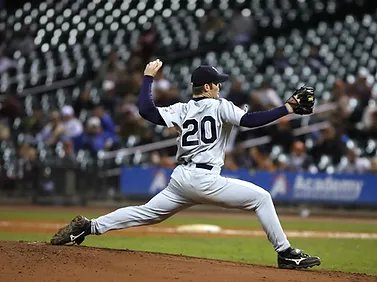Rotator Cuff
Disorders
Injury Guide

Rotator cuff tears and tendinopathy are common shoulder injuries that can significantly impact athletes’ performance and overall well-being. Understanding the symptoms, causes, and rehabilitation strategies is crucial for athletes seeking effective treatment and a swift return to their sport.
Symptoms:
Symptoms of rotator cuff tears and tendinopathy often include persistent shoulder pain, weakness, and limited range of motion. Athletes may experience discomfort while performing overhead movements, lifting weights, or participating in sports that involve repetitive arm motions. These symptoms can gradually worsen over time, affecting an athlete’s ability to train, compete, and enjoy their sport to the fullest.
Anatomy:
The rotator cuff is a group of four muscles (supraspinatus, infraspinatus, teres minor, and subscapularis) that surround the shoulder joint, working together to stabilize and facilitate movement. These muscles attach to the shoulder blade (scapula) and merge into tendons, which then attach to the upper arm bone (humerus).
In the case of rotator cuff tears, the tendons connecting the rotator cuff muscles to the humerus become damaged or completely ruptured. This disruption weakens the structural integrity of the shoulder, leading to pain, weakness, and restricted range of motion. Partial tears involve damage to a portion of the tendon, while full-thickness tears result in a complete separation.
Tendinopathy, on the other hand, refers to a degenerative condition of the tendons that make up the rotator cuff. It involves a breakdown of the collagen fibers within the tendon, resulting in pain, inflammation, and impaired function. Tendinopathy can occur due to repetitive microtrauma, chronic overuse, or age-related degeneration, gradually compromising the tendon’s ability to withstand stress.
The implications of rotator cuff tears and tendinopathy are significant for athletes. These injuries can disrupt an athlete’s training routine, performance, and even their ability to participate in their chosen sport. The pain and weakness associated with these conditions can limit the athlete’s ability to lift, throw, swing, or perform other essential movements required for their sport.
Moreover, the shoulder joint’s instability resulting from rotator cuff tears can increase the risk of further damage and compromise overall shoulder function. Athletes may compensate for the pain and weakness by altering their movement patterns, leading to abnormal mechanics and potentially contributing to other musculoskeletal issues or secondary injuries.
Causes:
The causes of these injuries can vary, but they often result from a combination of factors. Overuse, repetitive stress, and poor shoulder mechanics are common culprits. Athletes engaged in activities such as swimming, tennis, baseball, or weightlifting are particularly susceptible. Additionally, age-related degeneration and acute trauma, such as a fall or direct blow to the shoulder, can contribute to the development of rotator cuff tears and tendinopathy.
Rehab Strategies:
At Latitude Physiotherapy, we employ evidence-informed rehabilitation strategies to effectively treat rotator cuff tears and tendinopathy in athletes. Our first step is to conduct a thorough assessment to determine the severity and extent of the injury. This assessment helps us tailor a personalized treatment plan to address the athlete’s specific needs and goals.
Rehabilitation typically begins with pain management and inflammation reduction techniques, such as cryotherapy therapy and modalities like electrical stimulation, analgesic pain-relieving exercises (i.e., Isometric External Rotation and pendulums). Enter code 2ZDWMPCK at medbridgego.com to learn how to do these two exercises. These measures combined help alleviate discomfort and prepare the athlete for the subsequent stages of rehabilitation.
As the athlete progresses, a combination of strengthening exercises, flexibility training, and proprioceptive drills. Strengthening exercises focus on targeting the rotator cuff and surrounding muscles to restore stability and enhance overall shoulder function. Flexibility training aims to improve range of motion and address any muscle imbalances that may contribute to the injury. If we had to choose just one rotator cuff exercise, it would be the Prone T. To learn how to do this exercise, use code PXF4HVDJ at medbridgego.com.
In addition to therapeutic exercises, our clinic offers manual therapy techniques, such as joint mobilization and soft tissue mobilization, to enhance healing and tissue remodeling. These hands-on interventions can help break up scar tissue, improve circulation, and optimize joint mechanics.
To ensure a successful return to sports, sport-specific training and functional exercises are also important. Athletes can receive invaluable guidance on proper technique, biomechanics, and injury prevention strategies by working with a physical therapist. This comprehensive approach not only facilitates recovery, but also helps athletes develop skills and habits to prevent future shoulder injuries.
Let’s
Work
Together
Ready to get started? Click here. General questions? Read our FAQ page. Have a specific question? Leave us a message!
